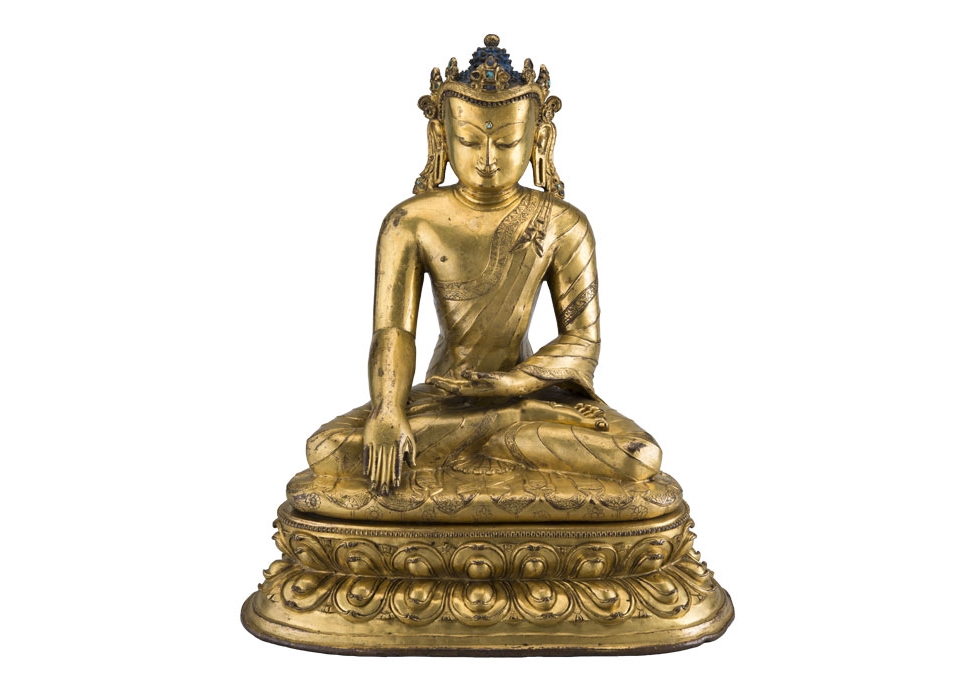
Buddha Shakyamuni is the most represented image in Buddhism. In Tibetan Buddhist culture there are several forms in which the Buddha’s life, aspects of his being, and his various sacred images are treated as icons. This characteristic representation shows the Buddha touching the ground, referring to the moment just before his enlightenment when he called the earth to witness the impending moment of his full awakening to the nature of reality. The eyes of the Buddha would have been painted, and some of the white pigment is still visible though the black of the pupils is largely gone. A finely incised decorative band runs along the edges of the Buddha’s robe. The lower lotus of the Buddha’s double lotus throne is significantly taller and wider than the upper lotus. It raises the seated figure and creates almost a triangular silhouette for the whole sculpture, its upper tip formed by the ornament above the Buddha’s cranial protuberance (ushnisha).
H 12 4/5 x W 9 21/25 x D 5 91/100 in.
C2001.10.2, HAR65025
- https://dev.rubinmuseum.org/images/content/3589/c2001.10.2_f__zoom.jpg
- https://dev.rubinmuseum.org/images/content/3589/c2001.10.2_f__zoom.jpg

